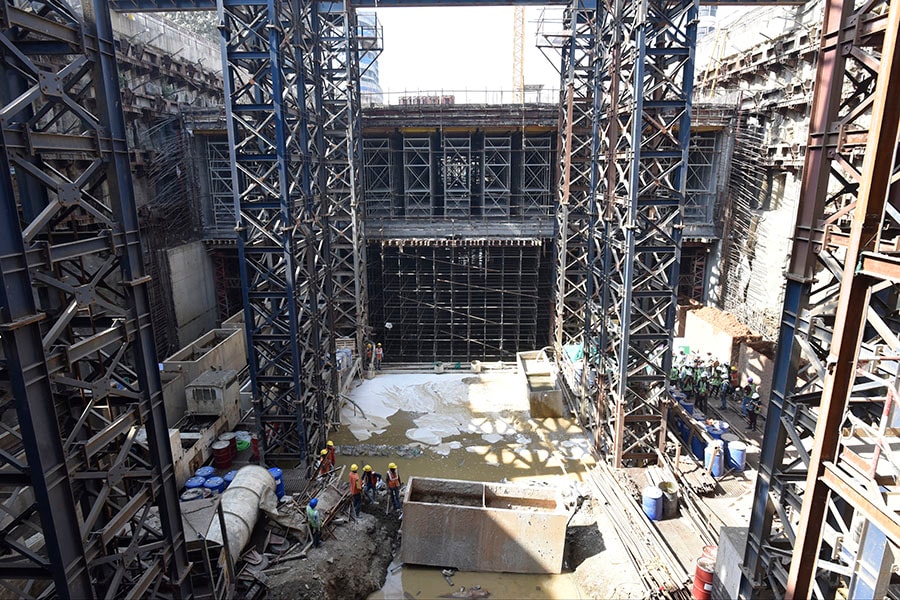
Will India's G20 leadership bring relief from increasing exposure to climate change?
Political promises ring hollow as climate change impacts biodiversity and induces unprecedented hazards across the country
 A Metro station being constructed at Mumbai’s BKC. The area has seen a sharp rise in dust pollution due to construction of infrastructure and residential buildings
Image: Anshuman Poyrekar /Hindustan Times via Getty Images
A Metro station being constructed at Mumbai’s BKC. The area has seen a sharp rise in dust pollution due to construction of infrastructure and residential buildings
Image: Anshuman Poyrekar /Hindustan Times via Getty Images
As India commenced its prestigious G20 Presidency on December 1, 2022, Prime Minister Narendra Modi identified climate change, pandemics and terrorism as the three “greatest challenges we face”. His words brought hope for enforceable action against our climate woes: India is ranked among the most polluted countries in the world and is second only to Brazil in deforestation. Would India’s G20 leadership bring relief from our increasing exposure to the felt effects of climate change, including floods, droughts, landslides heatwaves and pollution?
 Just two months after India’s G20 Presidency commenced, in February 2023, the government’s National Clean Air Plan Tracker identified a massive increase in average breathable particular matter (PM 2.5) in the comparable months of February 2021 and February 2023: From 92.7µg/m3 to 164.4 µg/m3 in the Bandra-Kurla Complex (BKC) in Mumbai. The safe limit for 24-hour exposure, according to the World Health Organization, is 15 µg/m3 and the initial interim target to achieve this limit in a phased manner is 75 µg/m3. Air pollution has been directly linked to the warming planet and to the climate crisis.
Just two months after India’s G20 Presidency commenced, in February 2023, the government’s National Clean Air Plan Tracker identified a massive increase in average breathable particular matter (PM 2.5) in the comparable months of February 2021 and February 2023: From 92.7µg/m3 to 164.4 µg/m3 in the Bandra-Kurla Complex (BKC) in Mumbai. The safe limit for 24-hour exposure, according to the World Health Organization, is 15 µg/m3 and the initial interim target to achieve this limit in a phased manner is 75 µg/m3. Air pollution has been directly linked to the warming planet and to the climate crisis.
BKC has been the focus of major infrastructure and private building for over a decade, mostly undertaken without mitigation measures to control pollution. Dust surrounding the Mumbai Metro 3 project, whose construction has continued for the last seven years, layers the street and visibly darkens the sky. Although funded by the Japanese International Cooperation Agency and promising world-class infrastructure, the environmental safeguards during construction remain primitive, and the health risks they pose would likely be impermissible within Japan itself.
Other private and public building projects without mitigation measures have also contributed to the pollution crisis and severe health problems of residents of the area. BKC resident Radha Rajadhyaksha described her elderly mother’s suffering. “Last February, my 80-plus mother went down to our colony garden sit-out. She immediately caught a bad cough, which lasted for two months, and stopped all further outings. I realised the air was thick with dust thanks to the construction going on all around us, especially from residential towers being constructed by Adani Realty next door. Most senior citizens had stopped going down at that point because of the ambience.”








